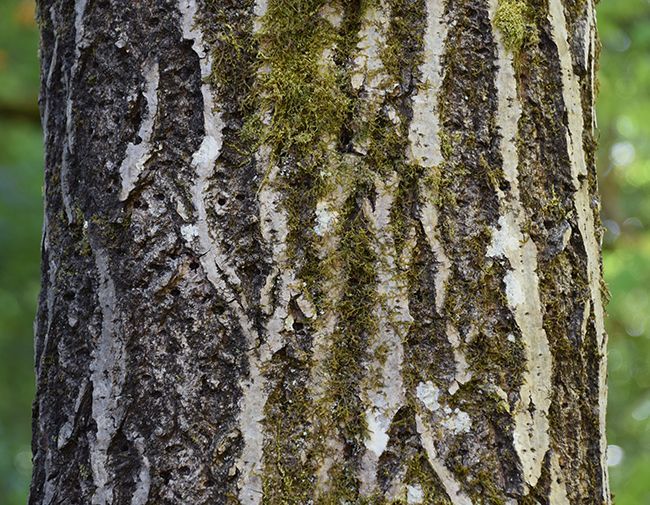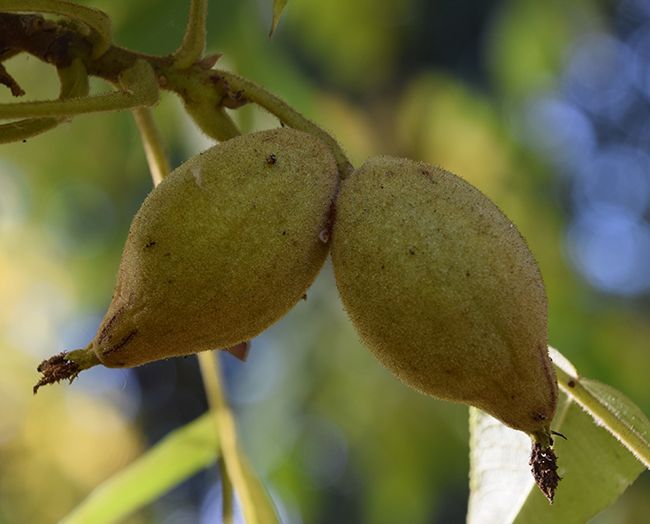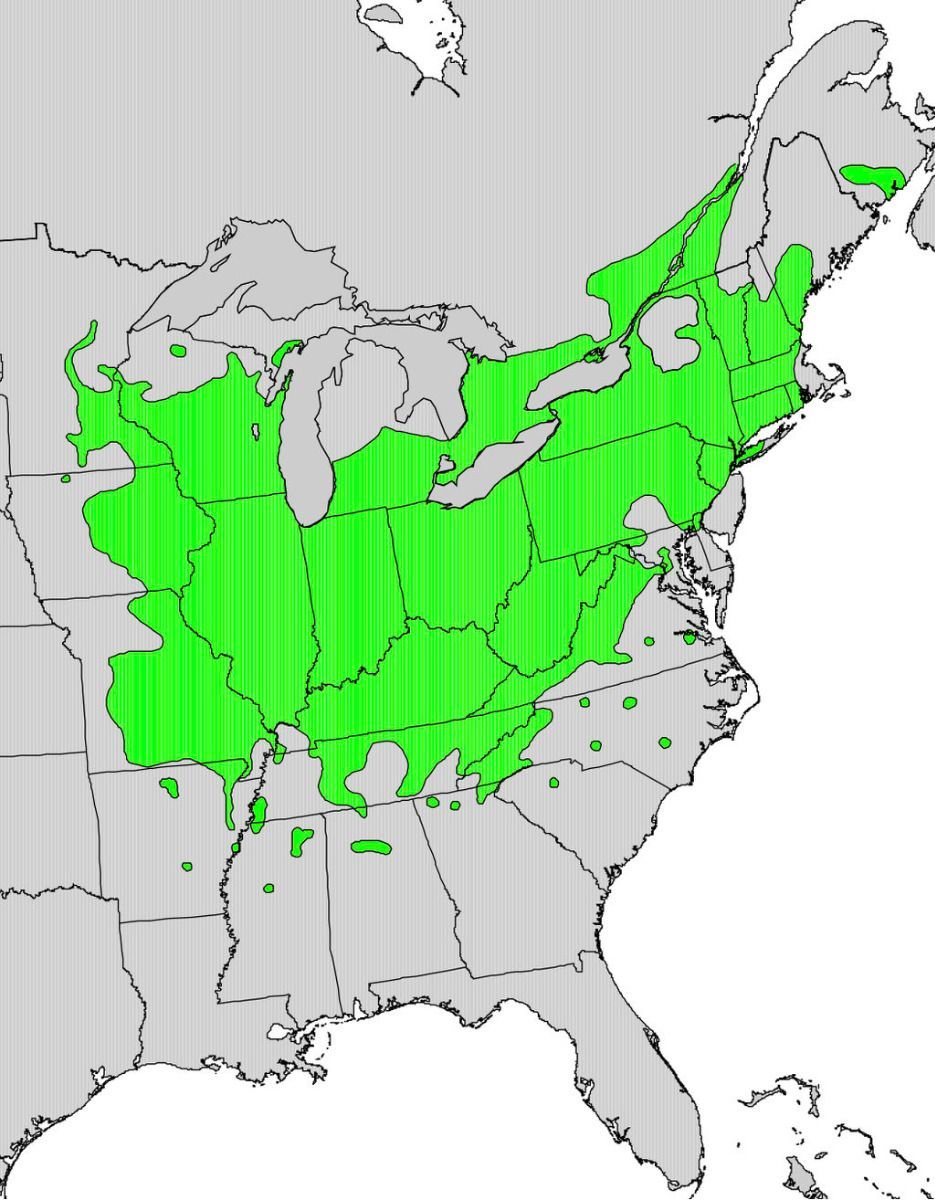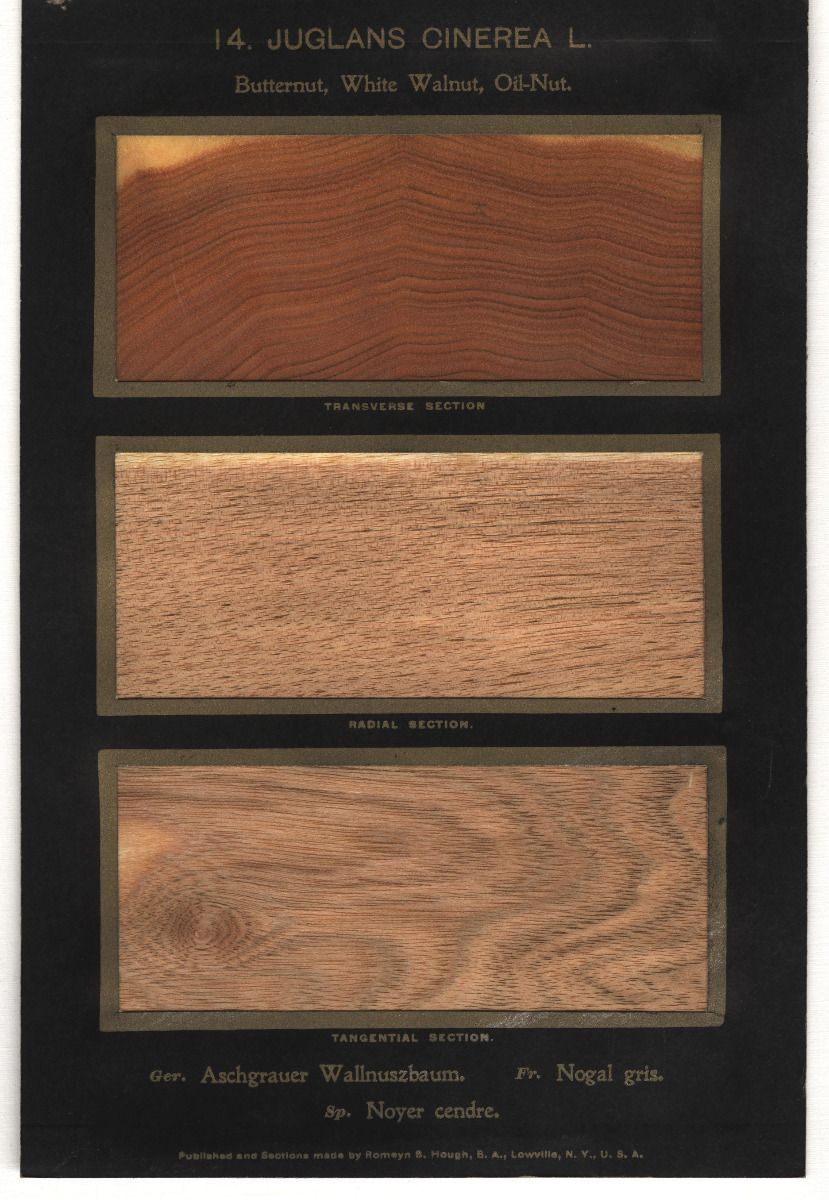.jpg.b020b5420409cd3bb55c4adb683f3650.jpg) The Tree
The Tree
The Butternut is usually not a large tree, seldom being more than 35 to 50 feet high and having a short trunk 12 to 30 inches in diameter, but in the forest it may occasionally grow from 80 to 100 feet high and three to four feet in diameter. The branches spread out into a wide symmetrical crown when the tree grows singly in open areas. It is very commonly called White Walnut and is very similar to Black Walnut in its shape and many other characteristics. The Butternut tree is prized more for its edible nuts than for the lumber it produces. The tree is comparatively short-lived and is very susceptible to breakage from the ravages of the weather and to attack by insects and disease. The nut is oblong in shape and deep-ridged. The kernel is very sweet, delicious in flavor, and is very rich and oily for which reason the name Oil-Nut is sometimes given the tree. The husk is pear shaped, sticky and has some properties as a dye of a yellow or orange color. The sap of the Butternut is very sweet and a syrup of fair quality may be made from it, but it is difficult to concentrate into sugar cakes as is done with maple sap.
Common Names in Use
- Butternut (Me, N.H., Vt., Mass, R.I., Conn., N.Y., N.J., Pa., Del., W. Va., N.C., S.C., Ala., Ark., Ky., Tenn, Mo., Ill., Iowa, Ind., Mich., Minn.,Wis., Kans., Nebr., Ohio, Ontario)
- American White Walnut (trade)
- Butternut (N.J.)
- Lemon Walnut (lit)
- Oil Nut (Me., Minn., N.H., S.C.)
- Walnut (Minn)
- White Walnut (Del., Pa., Tenn., Va., W. Va., N.C., S.C., Ala., Ky., Mo., Ill., Ind., Wis., Iowa., Nebr., Minn., S.Dak.)
Butternut tree bark

Butternut Foliage

Butternut Fruit

Growth Range
The growth range of Butternut extends from New Brunswick, southern Quebec, and southern Ontario throughout the northeastern section of the United States from New England westward through New York to the southern part of the Lake States and southeastern corner of South Dakota as far south as northern Arkansas, Mississippi, Alabama, Georgia and the northwestern tip of South Carolina.

The Wood
Butternut wood is lighter in weight and not as strong or durable as Black Walnut. It is coarse-grained, soft in texture. The heartwood is a gray-brown or light-chestnut-brown color, sometimes with a reddish tinge. The sapwood is narrow and a light-gray or light-brown color. When finished, the wood has a beautiful satiny luster. It may be worked easily with all types of tools, but being a soft wood must be worked with care and with very sharp tools.
Butternut by Romeyn Beck Hough

Butternut wood pieces

Uses
The wood is used mainly for interior finish and in the manufacture of furniture, some wooden ware and other cabinet work. It is used by wood carvers,and church altars are made of it. When quarter-sawed it has a very attractive figure and grain and may well be used to a greater extent in cabinet work and novelties.
Butternut bowl turning by Lewis Kauffman

Butternut bowl (bottom) by Lewis Kauffman

Bibliography
Shelley E. Schoonover (American Woods) 1951 (Watling & Co. ) Santa Monica, CA

.thumb.jpg.573d1497d0675219908c85aabefd797a.jpg)
Recommended Comments
There are no comments to display.
Join the conversation
You can post now and register later. If you have an account, sign in now to post with your account.
Note: Your post will require moderator approval before it will be visible.